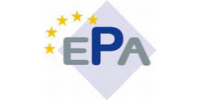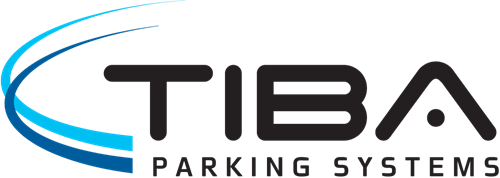The EPA Congress & Exhibition Returns for a Special 20th Anniversary Edition
Here's Why You Shouldn't Miss the EPA Congress 2022

This year’s congress will be an exceptionally important event for all of us in the parking industry. After the disruption of the pandemic, rapid change is further disrupting established management models. The impact of that change cannot be overstated. The various congress sessions will examine the effects of the political, technical, and business factors that are driving change and highlight the potential challenges and opportunities for the parking sector. The program summary is as follows:
On Monday the 12th of September the EPA Congress opens with three plenary presentations:
- The EPA Survey on the state of electric vehicle charging in the EU and opportunities for the parking sector;
- The Green Deal: The European Commission’s view on integrated solutions for dynamic and sustainable urban management;
- Mobility space 3.0: ERTICO’s view of the role of parking in the world of multimodal mobility.
The above topics will be discussed by a panel of distinguished international experts with questions from the delegates. The discussion will focus on the future of parking in the urban mobility scene.
These plenary sessions will set the scene for the next two days when there will be six parallel technical sessions and further plenary sessions.
Session 1 - Smart Parking, Smart Mobility, Interoperability Issues
The future of sustainable mobility requires interoperability including the integration of parking with the other modes of transport. Adoption of the APDS standard specifications (now the basis of ISO and CEN standards) and APIs will simplify and reduce the cost of data sharing and facilitate the development and introduction of innovative technologies and services in the parking and mobility sectors. This will benefit travelers, as it will allow them to find and pay for parking and related services more easily and efficiently across multiple channels. The session will provide examples of good practices from Europe and the USA. The panel will discuss how data standards can facilitate the integration of parking into convenient, sustainable, multi-modal journeys.
Session 2 - New Business Models in Parking and Mobility.
Since COVID, we have seen new trends in the use of public space, for example, on-street parking transformed into space for walking and cycling. We are also seeing new planning and transportation policies focussing on decarbonization, e-mobility, and micro co-mobility. These trends have financial consequences for public authorities and private companies. Estimations of those consequences and potential new business models for the parking industry such as mobility service hubs will be discussed.
Session 3 - UVARs as a Relationship Between Access and Parking Management
Urban Vehicle Access Regulations (UVAR) control the access of motorized vehicles to urban areas. They are an increasingly important tool in the urban mobility toolbox. There are a variety of types of UVAR with the most common being: Low Emissions Zones (LEZ), Limited Traffic Zones (LTZ), and Pedestrian Zones (PED). How can local authorities integrate UVARs and parking management policies to improve the quality of life in central urban areas for residents and businesses, workers and visitors?
Session 4 – Curbside Management/Urban Space Management/Freight Logistics
These emerging topics, along with new mobility services such as bike-sharing, will impact both on and off-street parking. The curbside should be considered a new type of real estate asset that needs to be actively managed to reduce congestion and generate revenue for cities. Digital systems as part of Mobility Space 3.0 enable operational interconnectivity and generate dynamic data for guidance, smarter planning, and collection of revenues.
Plenary Session - Parking and Mobility, Infrastructure and Urban Planning
This session examines ways to create the best urban environment for citizens, visitors, and local economies given the impact of major developments and local policies. The evolution of car parks into multifunctional mobility service hubs will play a key role. The integration of technology and operations into a truly seamless, customer-friendly Mobility as a Service in urban mobility and environment will be crucial to achieving strategic goals. Real estate developers and investors, as well as car park owners and operators, will be key enablers in the transition to multimodal mobility.
The Parking Network Start-Up Stage
During this special parallel session in the Silver Hall, Parking Network, in collaboration with EPA, will introduce a selection of upcoming parking and mobility start-ups followed by the announcement of the 2022 Award for the Best EPA Young Parking Professional.
On Tuesday, the 13th of September the day gets off to a roaring start with the EPA Awards ceremony. This year’s competition received 41 entries from 12 countries showcasing the very best of our sector. The awards ceremony will be a fascinating show as the 18 finalists in the five categories are presented and the winners of the 2021/2022 EPA-Awards are finally announced.
On Wednesday, the 14th of September, we will continue the parallel technical sessions.
Session 5 - Park4SUMP Towards a Parking Green Deal.
Parking is an essential tool for reshaping urban mobility. Park4SUMP reflects the very best parking strategies in European cities. By changing free parking to regulated (paid) parking, city authorities can optimize the use of valuable public space. Avoiding an oversupply of parking and inner cities full of cars makes cities more attractive. The local economy benefits and road safety improves.
Session 6 - Automated Valet Parking (AVP) a Progress Update.
The development of autonomous vehicles will undoubtedly impact the parking sector. AVP will soon be with us; much sooner than autonomous vehicles in the public urban area. With AVP the driver leaves the car at the car park entrance and the car drives itself to an available parking space. When the driver returns the car drives itself to the pickup point. This promises to be an eye-opening session with representatives from the automobile sector and a discussion on how this new technology can benefit the parking sector even before AVP cars are widely available.
The Congress will close with a 'not to be missed' Round Table featuring a prestigious panel of senior parking managers and leading parking specialists discussing the exciting possibilities for the future of our sector and our association.
For more details, please consult the program on the website. And, if you have not yet registered as a delegate, you can do so here: https://epacongress.eu/registration/
About EPA
 The European Parking Association (EPA) is the umbrella organization of European parking associations. It has been founded in 1983. The national member associations represent the parking branch consisting of private companies and public bodies running, operating, and managing on- and off-street parking structures and services as well as the supplying industry that offers all related products and services concerned with parking.
The European Parking Association (EPA) is the umbrella organization of European parking associations. It has been founded in 1983. The national member associations represent the parking branch consisting of private companies and public bodies running, operating, and managing on- and off-street parking structures and services as well as the supplying industry that offers all related products and services concerned with parking.
The EPA aims to facilitate the cooperation between the professional parking organizations of different European countries, the exchange and mutual support of professional experience among members, and may exert influence on measures and resolutions of the European Commission and other relevant international bodies relating to parking and urban mobility.




Comments
There are no comments yet for this item
Join the discussion